Issue #210: Greek Orange Phyllo Cake
Portokalopita, A Dessert of Mythic Proportions (in My Mind), No-Waste Home Cooking
Ever since I bought a pack of phyllo to make an herb tart several months ago, there has been a half-used, dried-up, roll of broken pastry in my freezer waiting for its moment to shine. As you know, it’s against my nature to throw food away. I’m lucky to have ample refrigerator and freezer space here in the country to store dibs and dabs of leftovers and unused stuff.
The other day at the offices of the Jewish Food Society, my colleague Amanda asked how it was that I had so many ingredients on hand all the time that I could just whip up a Chinese or Korean or an Indian meal. Well, my pantry of staples gathered from travels around the world—most of which are fermented or sealed in such a way that they keep a long time—coupled with my multiple refrigerators and freezers makes it easy. An industrial-strength vacuum sealer helps, too.
Forget cannabis. My favorite buzz comes from having some obscure ingredient on hand that a recipe calls for. So far, my memory remains good enough for me to recall what is where. And things like that phyllo, which would occasionally fall out of the freezer onto the floor when I was looking for something else, shattering into ever smaller pieces, remind me they are there.
I knew what I wanted to do with that dough.
I had become mildly obsessed with making a traditional Greek cake known as portokalopita, literally, “orange cake.” I’d seen recipes for it in various media. From what I gathered, you sliced the phyllo into thin strips—some recipes had you toast it first—then folded it into an eggy batter that baked up to a soft cake you doused in flavored syrup. I knew it took about half a package of phyllo and I assumed that because you cut it up anyway, shattered pieces didn’t matter.
Portokalopita is the kind of traditional recipe you imagine came into being expressly because home cooks had dried and crumbly leftover bits of phyllo they didn’t want to waste. I love this category of recipes. (Italian maltagliati, misshapen scraps of dough leftover from making stuffed pastas, are another favorite of mine.) I kept clipping and saving recipes for portokalopita, translating some from Greek, copying others from Greek cookbooks, even watching one of those nails-on-a-chalkboard “Best Recipes You’ve Never Heard Of” videos from Milk Street. I just needed an occasion that called for a large Greek dessert to give it a try.
That came last night.
Angelo is a colleague of Nate’s, a proud Greek who grew up in his family’s diner in Manhattan before attending Harvard and then Yale to become a doctor and renowned medical researcher. He takes his family to Greece every year. He is fluent in Greek and reads ancient texts. He quizzes his children on Greek mythology. Last time Angelo was over for dinner I asked what he knew about the traditional orange phyllo cake that had grown to mythic proportions in my mind. He hadn’t heard of it. I was shocked.
Last night Angelo was back at our house for dinner with our friend (and realtor) Amy, and I finally made my own version of portokalopita, blending several elements from different recipes I had collected. It was a success. The recipe is straightforward and virtually foolproof. The cake is both beautiful and delicious, with a delicate texture, not quite cakey or custardy but somewhere in between. The syrup gives it pleasant moistness and deeply aromatic flavor. When you have some crumbly phyllo lying around I encourage you to give it a try.
RECIPE: Portokalopita—Greek Orange Phyllo Cake
Makes one large cake, 10 to 12 servings
For the soaking syrup
3/4 cup granulated sugar
1/4 cup mild honey, Greek thyme honey worked well, if you happen to have some in your cupboard, or use additional sugar
Four 3-inch strips orange zest, made with a vegetable peeler
½ cup fresh orange juice (from 1 orange)
3-inch cinnamon stick
2 cardamom pods, lightly smashed
3 bay leaves
½ cup water
For the cake
8 ounces (about ½ package) phyllo, thawed
1 cup granulated sugar
1 tablespoon finely grated orange zest (from 1 large orange)
1 cup full-fat plain Greek yogurt
4 ounces (½ cup, 1 stick) unsalted butter, melted and cooled
½ cup grapeseed or other neutral oil
5 large eggs
1 tablespoon baking powder
½ teaspoon vanilla
½ teaspoon kosher salt
To make the syrup, in a small saucepan combine the sugar, honey, strips of orange zest, orange juice, cinnamon stick, cardamom pods, bay leaves, and water. Set over medium-high heat and bring to a simmer, stirring until the sugar is dissolved. Simmer for 3 or 4 minutes to infuse the syrup with flavor, then transfer everything to a small bowl to cool to room temperature.
Preheat the oven to 350°F. Grease a deep 9-inch round cake pan, line the bottom with parchment, and grease again.
Unroll the phyllo to remove any paper or other wrapping. Roll it up again and slice it into strips about 1-inch wide. Transfer the strips to a rimmed baking sheet along with any scraps and unfurl them to create a loose tangle of dough. Place the sheet pan in the preheated oven for about 20 minutes or more to dry out and toast the phyllo, tossing it from time to time to ensure even drying. The phyllo should beceome brittle and ever so lightly golden brown. Remove the pan from the oven and cool to room temperature.
In a large mixing bowl, combine the sugar and grated orange zest. Using a rubber spatula, rub the sugar and zest together against the side of the bowl until the sugar has been moistened by the oils in the zest and taken on a distinct orange color and aroma. It should have the texture of wet sand. Whisk in the yogurt, melted butter, oil, eggs, baking powder, vanilla, and salt.
Using the rubber spatula, fold handfuls of the toasted phyllo into the batter, stirring and folding to thoroughly moisten everything. It’s okay to break up the phyllo. Just be sure there are no dry patches. Transfer this mixture into the prepared pan and bake for 45 to 50 minutes, until the cake has risen, browned, and pulled away from the sides of the pan. Remove the cake to a wire rack.
While still hot and in the pan, poke the surface of the cake all over with the tines of carving fork or toothpick. Strain about half of the syrup onto the cake, let it absorb, and then strain the rest. Allow the cake to fully cool in the pan and absorb the syrup, at least 2 hours.
To serve, run a thin knife around the edge of the cake. Invert it onto a serving plate. Removee the parchment and invert the cake again so the top is facing up. The cake is delicious as is and even better with a dollop of rich Greek yogurt on the side.
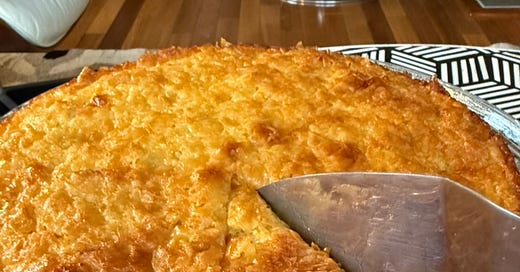



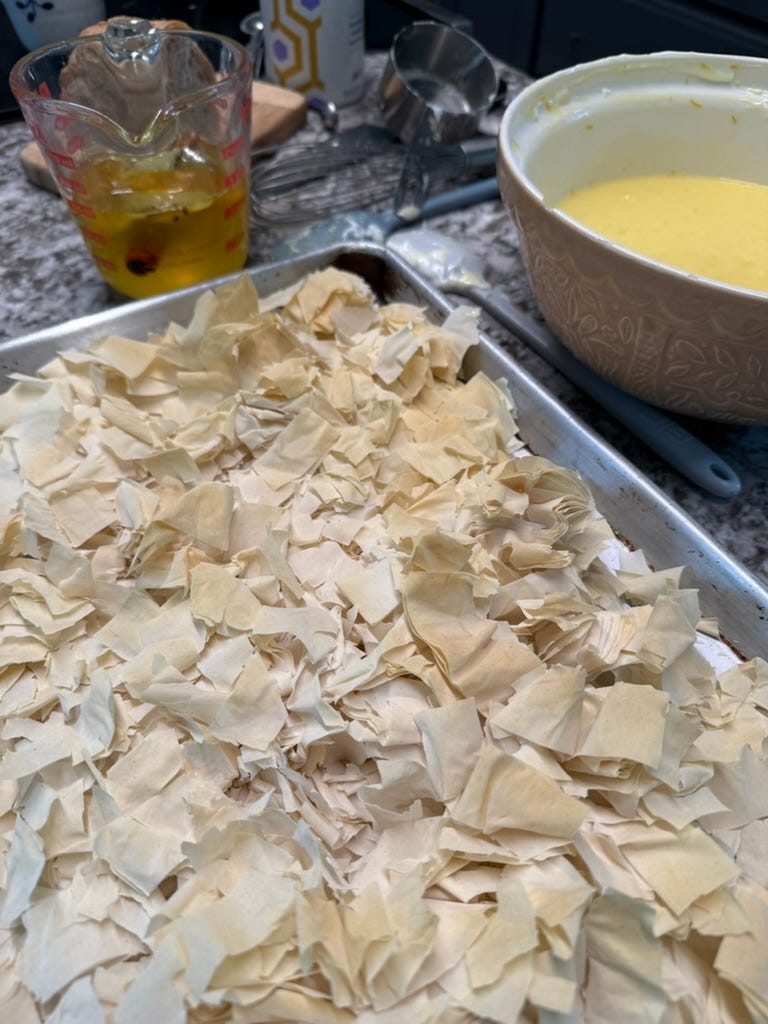

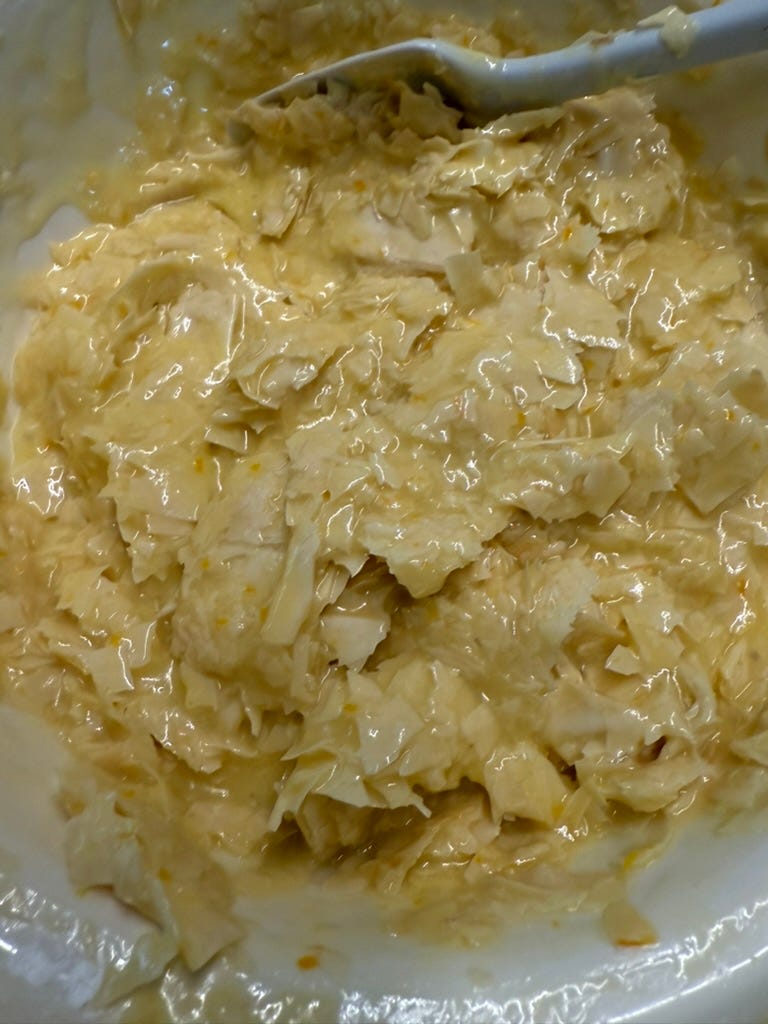
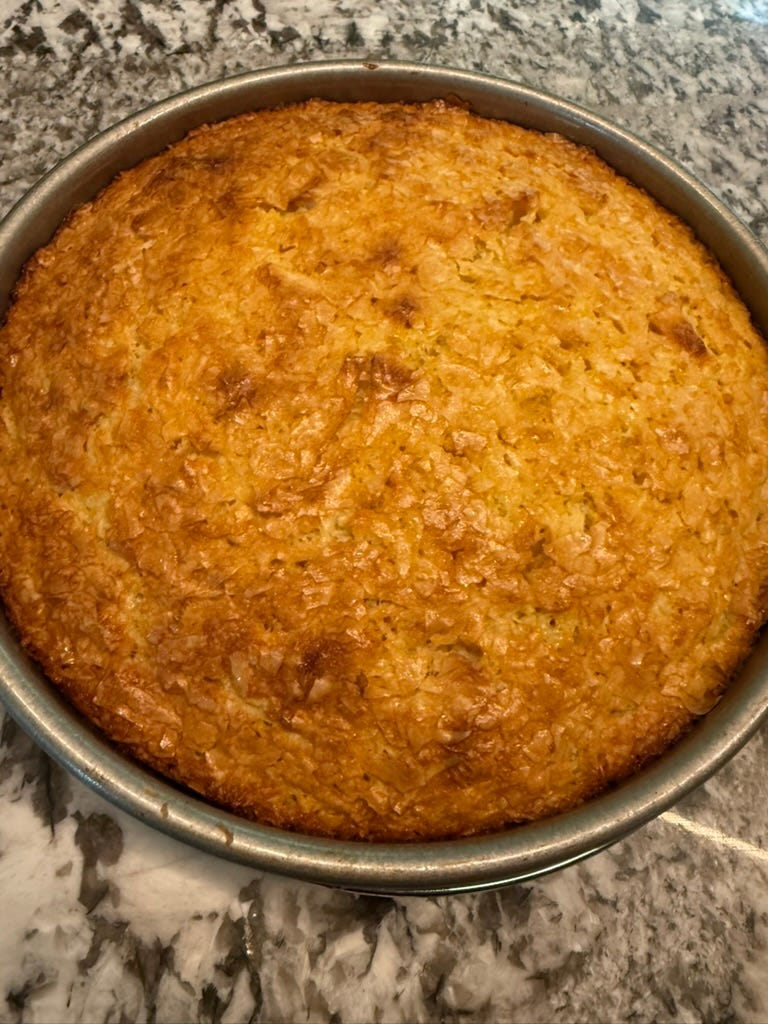
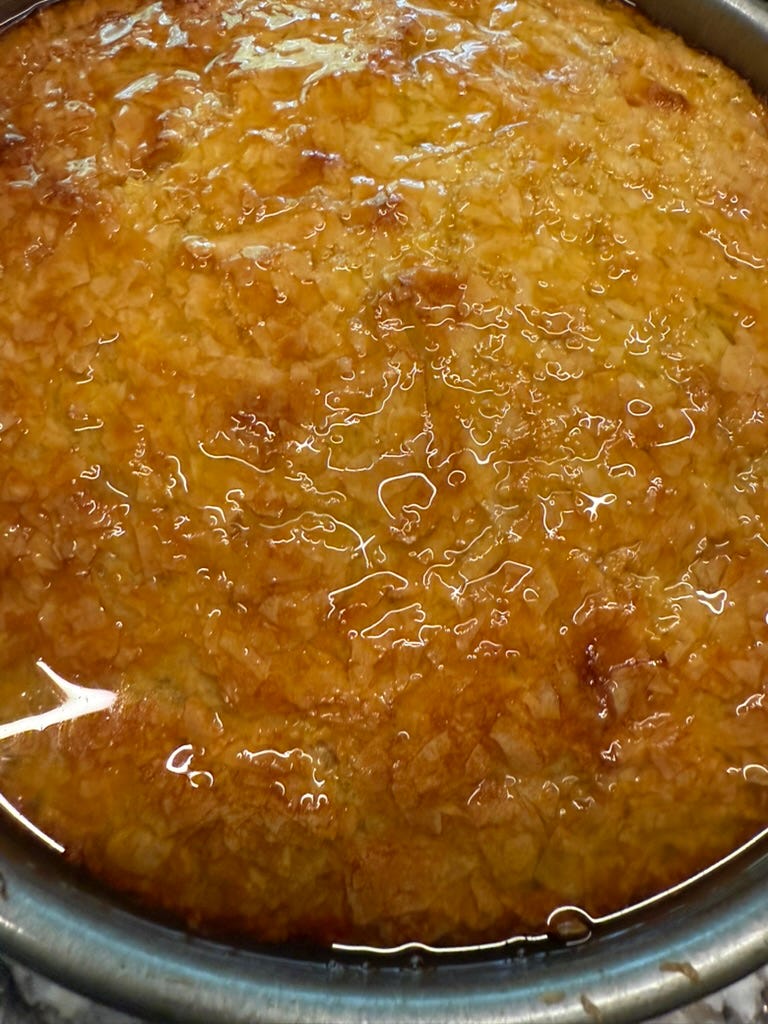
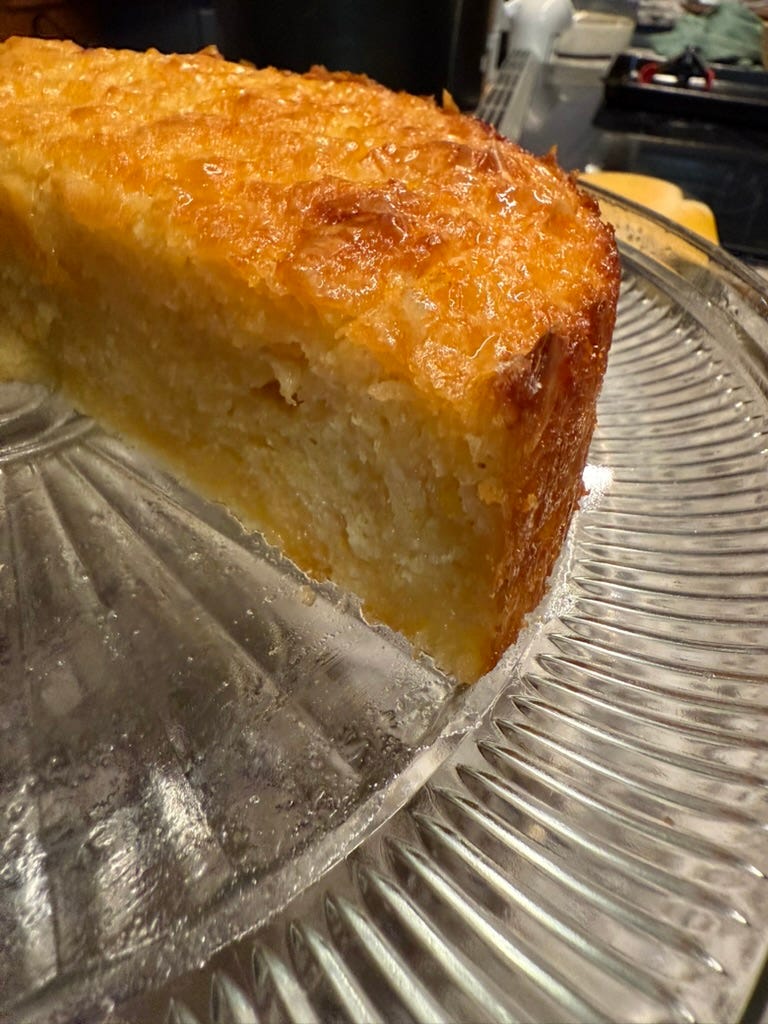
I’m a fan of any syrup custard cake. I will be making this.